Manchester has always been a dynamic and entrepreneurial city, as ambitious for its railways as for its varied industries, businesses and residents.
The city was at the vanguard of pre-Victorian railway development - the world’s first passenger service ran into Liverpool Road station on September 15 1830. Perhaps more indicative of what was to follow, this was also the world’s first inter-city railway, linking the ambitious Manchester with its age-old rival Liverpool. The latter’s wealth was based on maritime trade, a connection that Manchester’s merchants were keen to forge.
That Manchester city centre once boasted four major stations - London Road, Victoria, Exchange and Central, as well as lesser ones including Oxford Road, Deansgate, Mayfield and Salford Central - is a sign of the eagerness of competing Victorian entrepreneurs to bring to Manchester all the benefits of passenger and freight railways, from every point of the compass.
But by the early 1980s, railways in Britain had reached a major crossroads. Would they continue in slow (and probably terminal) decline, as roads became the ever more dominant mode of travel? Or would those who foresaw the inevitable congestion and environmental harm that this policy would cause set in motion a rail renaissance?
A report produced by Greater Manchester Council in April 1983 (Rail Strategy for Greater Manchester, The Options) examined two fundamental options.
Should Victoria station be closed (as Exchange and Central already had been), with all rail traffic concentrated at Piccadilly (formally London Road) and with a south-to-north ‘Picc Vic’ tunnel? Or should a light rail solution be developed to ease urban congestion?
In the end, and certainly to the relief of today’s transport planners, entrepreneurs and Mancunians in general, the latter option prevailed. Much of the 1983 report’s light rail option has evolved into the extremely successful Metrolink network, although while this now extends further than was proposed 32 years ago, some of the lines on the 1983 map have yet to see the benefits of modern trams.
Manchester Victoria survived the closure threat, although in the early 1990s the number of platforms was reduced from 14 to six. However, later this month the magnificent £44 million redevelopment of the station will be finished, with its eye-catching roof and greatly increased capacity for Metrolink services. And as the Northern Hub project is completed between now and 2019, so Victoria will become an even more important gateway to Greater Manchester.
Since 1983, several reports have suggested further developments to the Greater Manchester rail network, not least the 2003 RailPlan. While positive about the prospects, this was developed at a time when it was becoming clear to the city fathers that any ambition was problematic under the then franchising policy, especially given the lack of Government money for rail investment.
But now, with the launch on July 15 of the initial 12-week consultation phase of Transport for Greater Manchester’s Transport Strategy 2040: Our Vision, a whole new approach is being taken.
This strategy is not looking forward the conventional five years, but a huge 25 years. And this very long-term view is necessary, given the fundamental changes to the railway landscape and to the advances in technology in the past few years.
The Government is now very firmly committed to investing considerable sums each year in improving Britain’s railways, but recognises that the evaluation, planning and implementation of new schemes takes a very long time and cannot sensibly be accommodated within five-year horizons.
In addition, technology is being developed at such a pace that a long-term plan is necessary, so as to be flexible enough to cater for as yet unforeseen innovations.
After all, it’s only just 30 years since the first mobile phone appeared. And social media, which so dominates modern life, was a technological impossibility until relatively recently.
Transport Strategy 2040, which will succeed the present Local Transport Plan 3 when it is published in final form next year, will cover all modes of transport, from walking and cycling to roads and rail. And a recurring theme is how Manchester’s booming airport increasingly gives connectivity with global markets for the whole of the North of England.
Rail now plays a vital part in Greater Manchester’s transport map. As Transport for Greater Manchester (TfGM) Committee Chairman Andrew Fender said at the strategy’s launch event: “It’s difficult to imagine what the world might look like in 25 years, but it’s crucial that we have a long-term and ambitious vision of how we want our city region to look and feel in 2040.
“The Strategy is about making travel across Greater Manchester and beyond easier, faster, safer, healthier, more efficient and offering greater choice for customers, across all modes and increasingly supported by new technology. An effective transport system is integral to growth and prosperity, and acts as a catalyst for new development and regeneration. That’s what’s driven the transport innovation of the past, and it’s what will determine our future.”
Greater Manchester (GM) has been at the forefront of developing innovative new ways of funding rail (particular light rail) projects, and now funding through such streams as the Local Growth Fund and Earn Back Deals can be brought to bear.
A Devolution Bill is presently passing through Parliament that will give GM far greater control over its own spending in areas including transport, while GM is also at the heart of the Northern Powerhouse theme as well as both Rail North and Transport for the North.
The way that Rail North has already had a positive effect on the forthcoming Northern and TransPennine Express franchises (both of which start next April) is key to unlocking the potential for the railway to better serve Greater Manchester.
And one of Transport for the North’s principal activities is the development of the so-called HS3 line, the high-speed railway that is set to link Liverpool, Manchester, Sheffield, Leeds and Hull by the 2030s. This sort of timescale is reflected in the need for a vision stretching to 2040.
The 48-page Strategy consultation document points to several fundamental issues that drive transport development, indicating how Greater Manchester can link key policy areas: “Transport can only fulfil potential if it is planned in tandem with a wider economic, social and environmental programme covering housing, employment, innovation, public service and welfare reforms, and the need to develop a sustainable economy.”
While it would have been conventional to have asked GM’s ten component councils what they wanted to see in the next Local Transport Plan, TfGM Chief Executive Dr Jon Lamonte tells RAIL that it was decided to take a very different approach. Instead, TfGM started with the vision of what sort of place Manchester ought to be to live in, asking many people and groups across Greater Manchester for their input and comment.
“Then we can start work on a detailed strategy which would make that happen. With that vision in place we can then break down the goals into five-yearly transport plans,” he says. TfGM is eager for feedback and opinions from the general public, which can be contributed via www.tfgm.com/2040.
A key TfGM target is to have considerable improvements to the local rail network in place before the first HS2 service arrives (currently set for 2033), although there is a lot to be done over the next 18 years to agree, fund, develop and implement such changes.
Meanwhile, the programme for the Northern Hub and electrification in Manchester up to 2019 (the end of the railway industry’s Control Period 5) is well established. And GM’s Local Growth Funding is set until 2020/21, allowing other projects to be undertaken, such as the re-opening of three platform faces at Salford Central.
Then, for the 2020s: “We have to start looking at a few more things. There’s an opportunity to do an awful lot at Piccadilly,” says Lamonte.
Even today Piccadilly is working very close to capacity - trains frequently have to share platforms, especially in the peak times. And while the opening of the Ordsall Chord and the completion of the two through platforms at Piccadilly will bring some relief (by removing the TransPennine Express trains that currently reverse in the station to reach the airport), the pressure for new services and longer trains will soon eat up any remaining capacity.
“HS2 will add four platforms to the north of the present Piccadilly,” Lamonte continues.
“And we would like to move Metrolink around - its present location underneath the station might not be ideal if we introduce tram-trains in the 2020s. There is an opportunity to do something really interesting in a multimodal sense at Piccadilly, involving buses, coaches, taxis, tram and heavy rail in a major transport interchange.”
Linked to this is a massive opportunity for urban regeneration, including the redevelopment of the former Mayfield station to the south of Piccadilly, as well as sites in an arc all around the station.
The continuing expansion and success of Manchester Airport will also bring developments to the conventional rail network as more towns and cities (such as Hull) press for services to the airport.
High-speed rail services to a new station at the airport will greatly improve connectivity locally and to other parts of Britain for airport workers (19,000 in total) and passengers (22 million a year), as well as for adjacent developments such as the £800 million Airport City site.
“Getting people into jobs, and to and from jobs, is a key imperative for a thriving economy. And for a thriving economy you need transport connectivity,” says Lamonte.
The Strategy consultation points out: “We will need high quality, affordable and seamless transport connections from the most deprived areas to key employment and training locations, particularly for the 31% of households with no access to a car.”
The challenge here is that young people and others seeking lower-paid jobs need trains to get them across Manchester, while those at the higher end of the salary scale, who might prefer to live in towns beyond Manchester and commute some distance, also need to be able to do so by train. Says Lamonte: “There is no wall around Manchester to encircle the commuters - they come from Cheshire, from Lancashire, even as far as Sheffield.”
So the need to maintain mobility between the ten centres that form Greater Manchester, as well as providing links from further afield, will help shape future rail investment and services. And add to that the demands of tourism - with 1.1 million people visiting the area each year from overseas, Greater Manchester is Britain’s third most popular tourist destination after London and Edinburgh.
Social trends and advancing technology also have an impact, with the Strategy document noting: “Younger people’s travel aspirations are likely to be very different to previous generations, with less emphasis on private car ownership and use. They are more likely to communicate using social networking, rather than relying on face-to-face meetings. When they do travel, they are more likely to consider a range of possible options ‘on the go’, with the support of mobile and wearable devices.”
Meanwhile, at the other end of the age range, older people have an increasing ability and propensity to travel longer distances, through improved health and wealth.
So what sort of new services might be envisaged? It is far too early to say, but possible examples such as a fast Manchester-Milton Keynes-Oxford-Southampton service has long been noted as a possibility once the East West Rail line opens.
And while historically it was a very strong rail corridor, for some time Manchester has had no direct services to Derby, Leicester or the South Midlands, nor to Cambridge and ‘The City’.
Further afield, Manchester has long aspired to direct rail services through the Channel Tunnel, although this is only really possible if the HS2-HS1 link is made in London, and Passport and Customs requirements can be sensibly met.
Nearer to home, there are calls for improved services to the area around Wrexham and the Wirral, on the line through Knutsford to Chester, and for a new service to Carlisle via Settle.
Within Greater Manchester, improved cross-Manchester services to link specific towns might be envisaged, while a proper service between Stockport and Stalybridge is a frequent call of campaigners and local MPs.
“It’s a fact that while the northeast quadrant of the conurbation has more of the people, the job opportunities tend to be in the southwest,” says Lamonte.
“We have around 100,000 students in Manchester, perhaps the largest student body in Europe, and we need to be an attractive place for those people to live and work after graduation.”
Doubtless many more possibilities for new rail services will emerge as studies are undertaken, although all will require new, high-quality rolling stock to attract passengers, as well as the track and platform capacity to match.
Freight is also a vital ingredient of Greater Manchester’s railways, and will grow considerably given the developments at Liverpool Docks and the proposed Port Salford project. The former will bring far more container traffic to Liverpool, and via the Manchester Ship Canal the multi-modal facilities at Port Salford will also add to the capacity required by full-gauge, full-length freight trains passing through Greater Manchester.
TfGM’s scope and remit is focused on addressing the issues within its City Region. But through its involvement with TfN and Rail North, longer-distance rail issues such as access to the airport or the travel needs of tourism can be addressed, says Lamonte.
Linking this with the devolution process, of a range of areas to GM and of rail powers to the North in general, Lamonte turns to the current franchising process:
“What the local authorities right across the North said was that they wanted to take on those franchises. I think when people see the final outcome, they are going to be quite impressed that we have made a real difference in the shape of these franchises, something the Department for Transport would never have done - and I think they’d be the first to recognise that as well.
“Looking beyond this, all the North’s major cities then said: how can we improve the transport links between us in the longer term? And this is where Transport for the North comes in, with its multimodal approach.
“Do we need a higher-speed rail link east to west? Yes we do, and the work that is under way now is looking at what such a line might look like. So TfGM is progressing local issues, is taking a strong role in the new franchises, and is also contributing towards longer-term rail developments across the North.”
Lamonte continues that while devolution plus Rail North “starts to gives us a lot more control over what happens, and far more influence, the big step is Transport for the North, which is not just a partnership with Government, but also with Network Rail, HS2 Limited, Highways England… a powerful group which can really shape the future for the next 20-plus years.”
The £30m allocated to TfN in the July Budget “is a really powerful statement as to the Government’s commitment to the Northern Powerhouse policy”, he adds.
Which takes us full circle, back to the need for Greater Manchester to have a 25-year transport strategy now to tie in with the rest of the long-term thinking and planning.
Turning to the new Northern and TransPennine Express franchises that start in April 2016, Lamonte says: “We have a transformational package against which bidders have been asked to bid. The bids are being evaluated, and there is good thinking there, particularly rolling stock improvements. And if there is one thing the North needs, then it’s new rolling stock.”
He stresses that “it would be absolutely wrong” to think that the two franchise specifications were anything other than robust documents, fully agreed between Rail North and the DfT.
“The influence of local transport authority officers across the North shaped the specification, and there has been a lot of work between the Treasury and the DfT. I have no reason to believe that we won’t see the changes we absolutely need to make rail travel better in the North.”
Rail North will manage the two new franchises alongside the DfT, and Lamonte confirms the ambition for the franchises that will follow in around 2023: “The big next step, the logical step, is that the following franchise or franchises will be set and directed by the North.”
All these changes in the way Greater Manchester’s rail services are managed and developed is leading to a new way of working between TfGM and the rail industry, as TfGM Head of Rail Amanda White explains.
Instead of it being an ‘us and them’ approach, TfGM is now working alongside the train operators so that when, for example, there is a problem with a rail service, TfGM can deploy buses to carry the affected passengers, as well as staff to help give information and guidance on the spot.
And joint Rail North/DfT working groups are looking at the best way to improve the North’s rail services even further, once the new franchises are in place and new trains and new services begin to emerge.
Another group is already examining the effects of pausing the trans-Pennine electrification, and is considering how to react speedily whatever recommendations are made in Sir Peter Hendy’s report, which is due in the autumn.
For example, it might have been assumed that the Class 185 diesel units to be displaced from First TransPennine Express might have moved to the ‘Northern Regional’ services. But if that cascade is delayed, what can operate those services, and what effect does that have on the Government’s oft-repeated promise that all of Northern’s 102 Pacer (Class 142 and 144) units will be withdrawn by the start of 2020?
On July 29, Lord Ahmad of Wimbledon (the Government’s transport spokesman in the Lords) told Lord Greaves in a Written Reply: “The pause in the electrification of trans-Pennine and the Midland Main Line will have no impact on the ending of the use of Pacer vehicles on the Northern franchise by 2020, or the terms and conditions relating to the re-letting of the Northern franchise.”
Detailed conversations are also being held with HS2 Ltd as to what Manchester needs to best exploit HS2’s potential. Says White: “Now we have HS2, Network Rail and the other interested bodies sitting round the same table, talking not just about what we want for 2040, but also how short-term developments will fit into the Long-Term Planning Process.”
In this more collaborative way of working and planning, even HS3 is being developed, in how it will interface with HS2 and what the train services might look like.
Nevertheless, while TfGM is intimately involved with long-term plans for franchises and high-speed rail, its main rail-related remit remains to look after the local rail services within its boundaries.
The potential for developing and improving these services under the new franchises is now far greater than it has been over the past 20 years. White says that TfGM has recently commissioned an Urban Rail Study that will consider future Metrolink and tram-train developments, as well as heavy rail services.
When the DfT announced its British tram-train trial in March 2008, to be carried out on the Huddersfield-Penistone-Sheffield line, Greater Manchester was one of the first to express serious interest in operating such vehicles in its area. Indeed, the 1983 Rail Strategy for Greater Manchester study indicates the potential for converting the lines to Glossop and Rose Hill to light rail use.
In 2008, Manchester could realistically have anticipated that such services would be under way by now. Instead, the trial has been long delayed, and it is likely to be the early 2020s before tram-train vehicles arrive in the UK.
Thus the forthcoming Urban Rail Study will consider Light Rapid Transit across Greater Manchester in some detail, and evaluate whether the long-standing proposals for tram-train might (for example) actually be best served by developing a bus rapid transit solution.
“More transport infrastructure is certainly going to be needed to cater for Manchester’s growth, and it does make sense to link local rail services into the Metrolink network, thus releasing capacity at Piccadilly station,” says White.
The powers being devolved to Greater Manchester cover buses, roads and rail, as well as some non-transport topics. In rail, TfGM is looking at taking over the leases of the 97 railway stations in the area, so as to be able to improve their condition (particularly with regard to accessibility) and exploit their commercial potential to the benefit of the local communities.
“There is quite a lot of room for improvement, and we want to see much better integration between all modes of transport at railway stations,” says White.
“If we can improve our stations so they provide a much, much better facility for the community, and have a consistent quality and brand with a high level of customer service, then we think there’s a lot of opportunity to be had there.”
Irlam station, where private investment has provided new facilities, is considered a particularly good example of what can be achieved.
At present, Network Rail leases nearly all of Britain’s stations to the relevant train operator on leases that last only as long as the franchise. But TfGM hopes to be able to take on 99-year leases, so as to give plenty of time for private sector investments to be developed and a proper return made.
The Strategy consultation document wraps up all these challenges: “The local network needs to be connected with HS2 services, new inter-city and regional services, tram services and expanded park and ride facilities.
“This requires building on existing commitments to provide more electrification, new rolling stock as a matter of urgency, higher rail service frequencies, new services, gauge improvements and the removal of network pinch points, as well as integrated ticketing and seamless travel.”
The railway’s fortunes have changed in the past few years, and with Greater Manchester’s ambitions undiminished, nowhere in the UK has such major and varied developments firmly in its sights. The vision document can be downloaded via the TfGM website at www.tfgm.com/2040.
- This feature was published in RAIL 782 (September 2 - 15 2015)

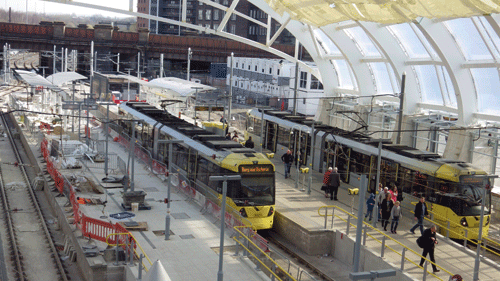
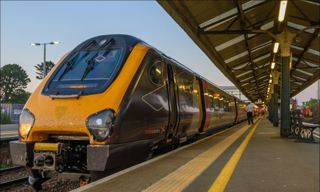
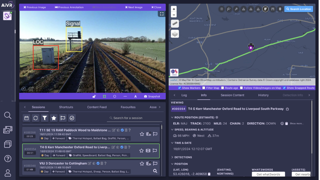
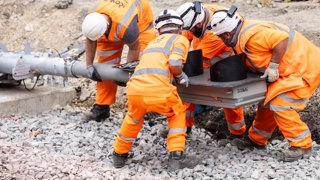
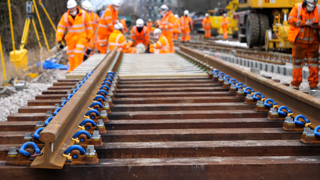










Login to comment
Comments
No comments have been made yet.